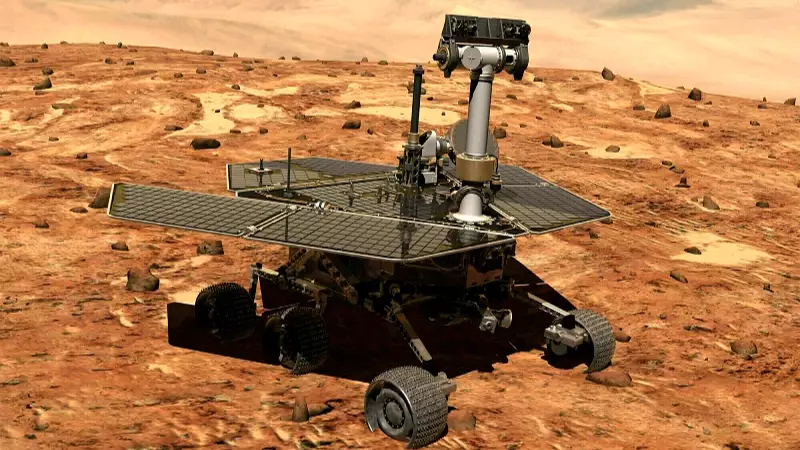
It's with heavy hearts that we announce the news of NASA's Opportunity rover, the third robotic explorer to land on Mars, has died. RIP.
Okay, so it was a robot and is therefore not capable of dying as such, but on Wednesday the space agency did announce that its mission was complete - and therefore the plucky bot's reason to function is officially over.
Advert
The NASA experts haven't heard a peep from the golf buggy-sized vehicle since a giant dust storm hit the Red Planet back in June of last year, covering the contraption's solar panels and cutting off contact.
Since then, 830 rescue commands had been beamed to the rover but to no avail - according to the Guardian, the rover 'remained silent' after a last-ditch effort to contact Opportunity earlier this week.
Despite the sad news, the atmosphere at the press conference at NASA's Jet Propulsion Laboratory in Pasadena, California, was celebratory of Opportunity's mission, which ran for a whopping 15 years and completely changed our understanding of the Martian landscape, geology, atmosphere and history, as well as our own planet.
Advert
"I learned this morning that we had not heard back," said Thomas Zurbuchen, associate administrator of NASA's Science Mission Directorate at the conference.
"It is therefore that I am standing here with a sense of deep appreciation and gratitude [and] I declare the Opportunity mission as complete.
"It transformed our understanding of our planet, everything we do and think about in our planetary neighborhood with Mars and elsewhere relates to the research from that and the engineering breakthroughs that came from that."
Opportunity's life is certainly one to be celebrated. Firstly, the bot pushed the discovery that that Mars isn't as dry as scientists once thought, by sending back findings of hematite - a mineral that requires water to form - in rocks on the southern region of Meridiani Planum, a plain located two degrees south of the Red Planet's equator.
Advert
Plus, it had a good run - designed to operate for 90 Martian days and cover just 1,000 meters on the planet, Opportunity went above and beyond, covering around 28 miles and sending information back for 15 solid years.
John Callas, Mars Exploration Rover project manager at the Jet Propulsion Laboratory, put the epic journey down to a 'phenomenal' effort, adding: "We had expected that dust falling out of the air would accumulate on the solar rays and eventually choke off power.
"What we didn't expect was that wind would come along periodically and blow the dust off the arrays.
"It allowed us to survive not just the first winter, but all the winters we experienced on Mars."
Featured Image Credit: PATopics: World News, Interesting, Nasa, space